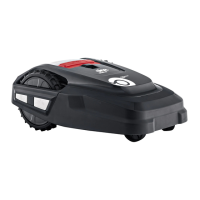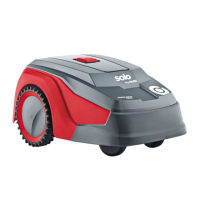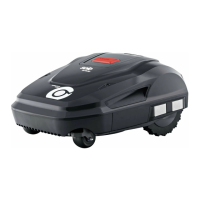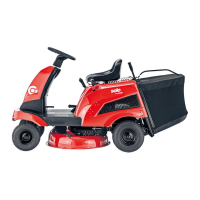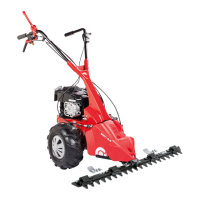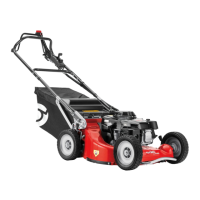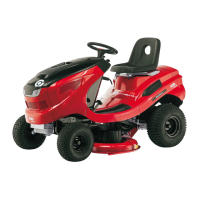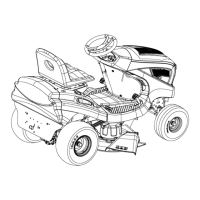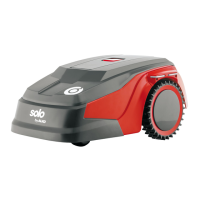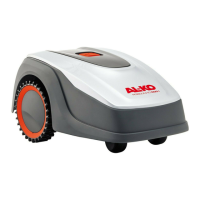457290_b 53
Installation
5. Exclude excessive upward or downward
slopes: see chapter 4.5.5 "Excluding down-
ward slopes", page53.
6. Create loops of cable: see chapter 4.5.6
"Creating loops of cable (08)", page53.
7. From a distance of at least 1m, guide the
boundary cable straight to the base station
(01/k).
8. After completing the routing of the boundary
cable, connect to the connector (04/7) of the
base station: see chapter 4.5.1 "Connecting
the boundary cable to the base station (04)",
page52.
4.5.3 Excluding obstacles
Depending on the surroundings of the working ar-
ea, the boundary cable must be routed at differ-
ent distances to obstacles. Use the ruler that can
be removed from the packaging to determine the
correct distance.
NOTE
Exclusions are only necessary if they
cannot be detected by the bump sensors
of the automatic lawn mower. Avoid too
many or unnecessary exclusions.
Distance from walls, fences, beds:
min.15cm(01)
The appliance moves along the boundary cable
with an offset of 15cm to the outside. Therefore,
route the boundary cable at a distance of at least
15cm from walls, fences, beds, etc.
Distance from terrace edges and paved
paths(06)
If the terrace or path edge is higher than the
grass surface, a distance of at least 15cm must
be complied with. If the edge of the terrace or
path is at the same height as the grass surface,
the cable can be routed exactly along the edge.
Distance of obstacles from the boundary
cable(01)
If the boundary cables are precisely folded up
away from the obstacle or towards the obstacle,
i.e. distance 0cm, the appliance moves beyond
the boundary cable. The boundary cables must
not be crossed over (01/g).
Routing the boundary cable around
corners(07)
■
For inwards going corners (07/a): Route the
boundary cable diagonally to avoid the appli-
ance becoming caught in the corner.
■
For outwards going corners with obstacles
(07/b): Route the boundary cable in a point in
order to avoid a collision of the appliance with
the corner.
■
For outwards going corners without obsta-
cles: Route the boundary cable at an angle of
90°.
4.5.4 Enclosing corridors (01/i)
In the corridor the following distances must be
complied with:
■
Total width: min. 60cm
■
Distance of the boundary cable to the edge:
15cm
■
Distance between the boundary cables: min.
30cm
4.5.5 Excluding downward slopes
Downward slopes that are greater than 40%
must be excluded with the boundary cable (40%
= 40cm downward slopes per 1m horizontally).
4.5.6 Creating loops of cable (08)
Spare loops of cable should be incorporated at
regular intervals in order to reposition the base
station or to extend the mowing area even after
the mowing area has been laid out.
Select the number of spare cable loops according
to your own judgement.
NOTE
In the case of spare cable loops, do not
form open loops.
1. Lead the boundary cable around the current
lawn peg (08/1) and then back to the previ-
ous lawn peg (08/3).
2. Then lead the boundary cable to the current
lawn peg (08/1) again. This creates a loop.
The cables must be close together.
3. If necessary, attach the loop to the ground in
the middle with an additional lawn peg (08/2).
